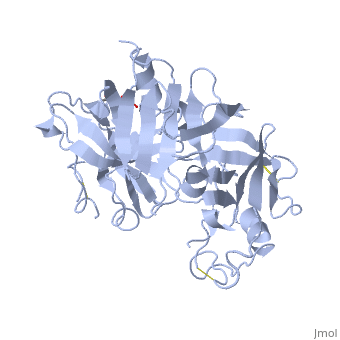Sandbox Reserved 472
From Proteopedia
| This Sandbox is Reserved from 13/03/2012, through 01/06/2012 for use in the course "Proteins and Molecular Mechanisms" taught by Robert B. Rose at the North Carolina State University, Raleigh, NC USA. This reservation includes Sandbox Reserved 451 through Sandbox Reserved 500. | ||||||
To get started:
More help: Help:Editing For more help, look at this link: http://www.proteopedia.org/wiki/index.php/Help:Getting_Started_in_Proteopedia Renin
IntroductionIntroduction Renin was first discovered in 1898 by physiologist Robert Tigerstedt and his medical student Bergman. It is an aspartyl-protease that plays a major role in the physiological rennin-angiotensin-aldosterone system; therefore indirectly involved in homeostatic control of salt, volume and blood pressure. In the human body, renin is synthesized by juxtaglomerular epitheloid cells proceeding stimulation by the prostaglandins and sympathetic nerves. Studies have shown that the protease is inhibited by angiotensin II, high blood pressure, salt and volume overload; all through negative feedback loops. Once produced, renin enters the body’s circulation in renal system through afferent arterioles. Expression of the renin gene in these cells have been heavily studied in humans and mice and mapped to chromosome 1. |

